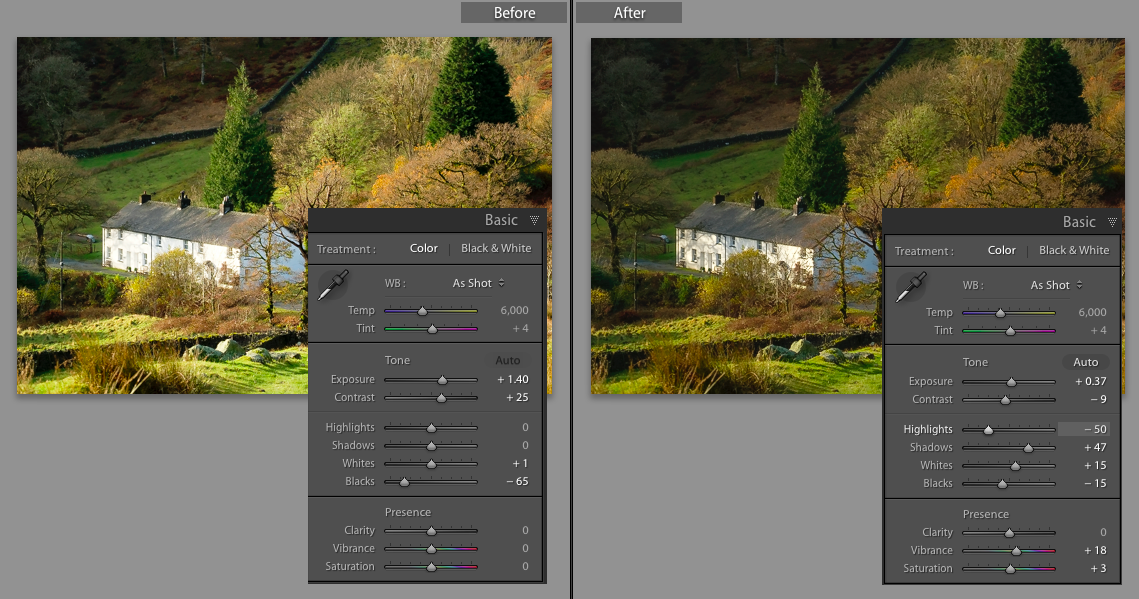Lightroom 7.1
Lightroom 7.1 came out overnight with updates to all parts of the “Lightroom world” – to Lightroom itself (ie the so-called “Classic”) and also to the cloud-dependent iOS, Android and PC/Mac apps. It’s mainly about new camera support, bug fixes, and performance tuning, but I recommend that you check out the one feature that is new – a completely-rewritten Auto button.
The old Auto was always a crude “lucky dip”, wrong at least as often as it was right, but the underlying calculation has been totally changed after a lot of empirical research:
Auto has been completely reworked to create better results, every time. Using an advanced neural network powered by Adobe Sensei, our artificial intelligence (AI) and machine learning platform, the new Auto Settings creates a better photo by analyzing your photo and comparing to tens of thousands of professionally edited photos to create a beautiful, pleasing image. The new Auto is available ecosystem wide, including in Lightroom CC, Lightroom CC for iOS, Lightroom CC for Android, Lightroom CC on the web, Lightroom Classic, and Adobe Camera Raw (ACR).
I certainly think Auto’s results are very much better. Maybe the Whites and Blacks are set a bit too aggressively, and bright images such as snow scenes appear to be rendered a little too dark for my taste. One surprise is that Auto now sets the Vibrance and Saturation sliders, and while I don’t completely like this happening (I live in a drab country) I feel I can live with it. If I don’t like how these sliders pump up the colour, I quickly double click the Presence label to reset them to zero. But in general, I feel the new Auto almost always produces a substantially better starting point for editing.
Some other details:
- New Auto is based on the cropped area, not the full image
- It reads the WB settings when calculating slider values
- You can set the Auto values for individual sliders by Shift + double click
The other highlight of the 7.1 release is in LRMobile with the iOS app gaining a long-overdue watermarking feature. For what it’s worth, a couple more missing features have also been added to the new PC/Mac app LRCC Desktop.

In this case the new Auto is much more active, producing a result closer to what I would have done myself. I’m not sure I like it changing Vibrance and Saturation, though here I would accept it.
More about the new Auto
Jeff Schewe says:
[“Get me Closer Quickly”] is the aim of the design of the new AI based Auto. Also, it should be noted that I personally had a bit to do with training the new AI based Auto. I adjusted over 1K of my images from all sorts of situations and conditions including under/over exposures, high ISO, studio and artificial lighting as well as landscape day and nite shots. I was charged with making those adjustments I personally would do for my images (because, well, they were my images).
Yes, the new Auto is a bit conservative with extreme highlights with a tendency of texture and detail being important. Also, the shadows tend to be fairly open…
The goal here is to be consistent in “improving” an image’s global based setting and trying to improve the workflow for selection editing. Some images may need little or no further adjustments…most will need tweaking either globally or locally.
The old Auto was really and old crude and primitive attempt to generally adjust black and whitepoints with little other finesse to other settings. It sucked…it was just about as likely to screw an image up as make an improvement…but the new Auto has made great strides as a first pass adjustment.